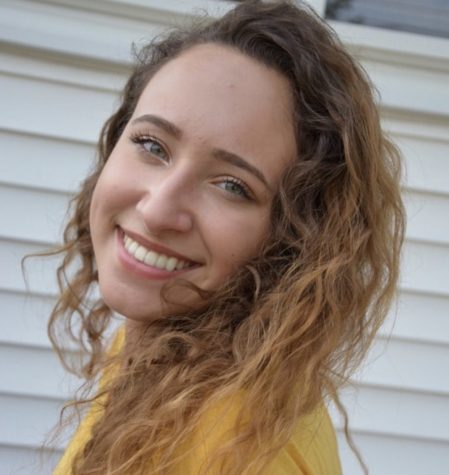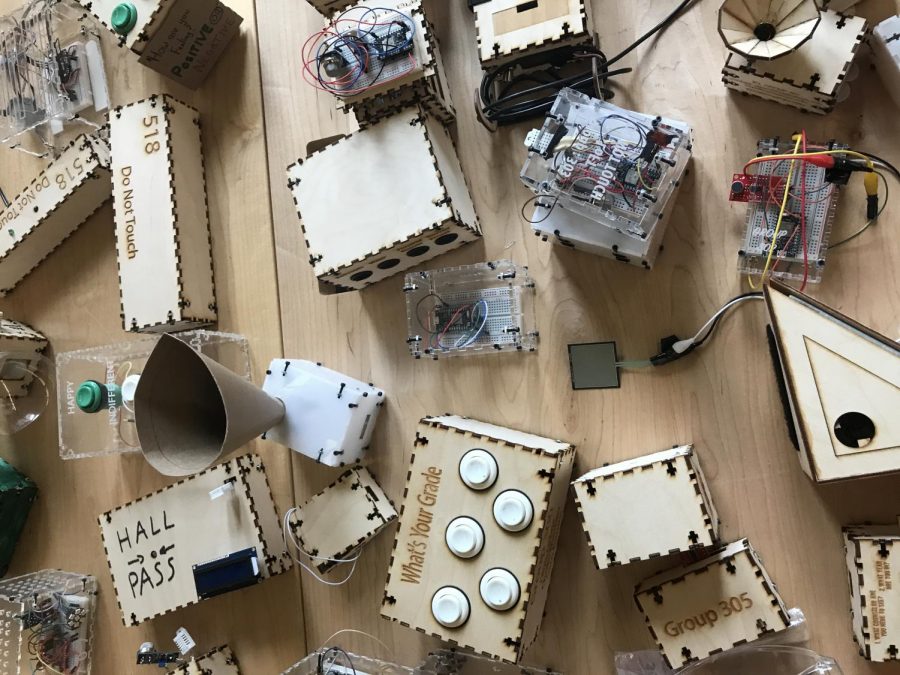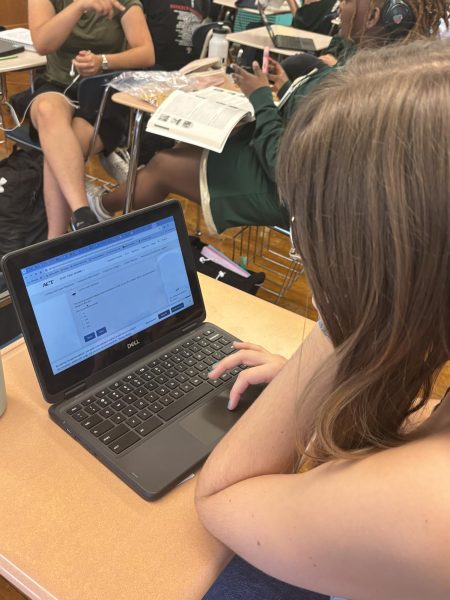‘Lane of Things’ expands project to other schools
Computer science department develops curriculum that develops a lesson for teachers around the city
A variety of 2016-2017 Lane of Things projects are sprawled out on tables in the Innovation and Creation Lab.
Sprawled out across large wooden utility tables in the Innovation and Creation Lab are different projects beholding flashing LED lights, colored buttons and wires. Computer monitors display numerous “strings” of code which are necessary for circuits and microprocessors to work properly.
An eight-week long project is under way for the students enrolled in the Innovation and Creation Lab, as well as the Physical Computing Lab. The formal name of the workshop, Lane of Things, teaches students about sensor science, and is ready to be integrated into its third year of lesson plans.
The workshop “is a spin-off from a much larger project called the Array of Things” which is “a collaboration between the National Science Foundation, Argonne National Labs, University of Chicago, and SAIC,” according to computer science (CS) teacher and Lane of Things partner, Mr. Solin. He said that the collaboration is roughly a $5 million dollar project.
“It’s like a ‘Fitbit’ for the city,” Solin said.
The project focuses on the development of sensory nodes that capture multiple data points based on a specific algorithm within civil engineering.
Sensory nodes can be defined as “device[s] that possess the capacity to gather sensor information from the environment” while also being able to “process the information and communicate with other nodes,” according to IGI Global. In addition, Slate, regards algorithms as a “set of guidelines” that are able to be performed. In this case, algorithms are performed by computers.
In a new effort, the collective goal of Lane of Things is to educate teachers within the city of Chicago about sensor science so that they could have the knowledge to create their own version when they return back to their classrooms. According to Solin, the “packaged curriculum” is set to be taught by teachers like himself and Mr. Law, CS teacher and Lane of Things partner as well, during summer 2018.
Not only is it the teacher’s goal to teach others about sensor science, a recent round of grant funding from Motorola Solutions is expecting Lane of Things to deliver its curriculum to other schools. The grant has been valued at roughly $50,000 a year for the three years Lane has been part of it, according to Solin.
“Motorola funded this new realm with that expectation,” Law said. “It’ll happen.”
One of the underlying goals of Lane of Things is to instruct students on how to process microcontrollers and how to utilize all available tools, according to Solin. Additionally, the microcontrollers are necessary for data analysis and data visualizations to be gathered from the sensors. Solin said that “tons and tons” of information can then be put to use in answering a variety of questions pertaining to the experiment.
“It can be about noise pollution and it can be about air quality and particulate matter,” Solin said. “There’s gas sensors, light sensors, sound sensors, temperature/humidity/pressure [sensors].”
Law added an example that shows how even though the technical side of the data is important, trying to solve social justice issues with it is just as vital.
“What social issues can we solve once we have data to back up what we’re talking about?” Law said.
Solin provided examples of other social questions that someone may ask if they’re measuring data for a specific subject: air quality.
“‘Why are there heightened instances of asthma in lower income areas or in these particular parts of the city?” Solin said. “Why is the air quality different and does the air quality relate to instances of asthma?’”
Douglas Pancoast, a professor of architecture at SAIC and a designer of the Array of Things project, said the interconnectivity of technology is “an important cultural concept.”
“There’s all sorts of acceptable hardware and software systems that you could learn about in order to make a sensor device,” Pancoast said.
Pancoast hopes that the Lane of Things project and the Array of Things system will serve as a platform for the wide interests of a student. In his field of architecture, he gave an example about how he brings data analysis into play.
“I know that me and my students, they are interested in the physical environment because we think about it relative to building making,” Pancoast said. “I might combat the availability of data about a place from an architectural perspective because I want to understand the implications of a new building.”
As of right now, the Lane of Things curriculum will be expanding to those teachers locally around the city. However, Pancoast said that there are different physical environments that can utilize sensors.
“In Chicago, we’ve got a set of circumstances that people would want to know more about through data collection but those circumstances exist in all sorts of places,” Pancoast said. “We’ll see how far it can go.”
Your donations directly fund the Lane Tech student journalism program—covering essential costs like website hosting and technology not supported by our school or district. Your generosity empowers our student reporters to investigate, write, and publish impactful stories that matter to our school community.
This website is more than a publishing platform—it's an archive, a research tool, and a source of truth. Every dollar helps us preserve and grow this resource so future students can learn from and build on the work being done today.
Thank you for supporting the next generation of journalists at Lane Tech College Prep!

Dominika has been involved with The Warrior since her junior year. She participates in many extracurriculars at Lane; her activities range from Flag Corps...



